Pressure at any cost: methods for improving the security of military vehicle wheels
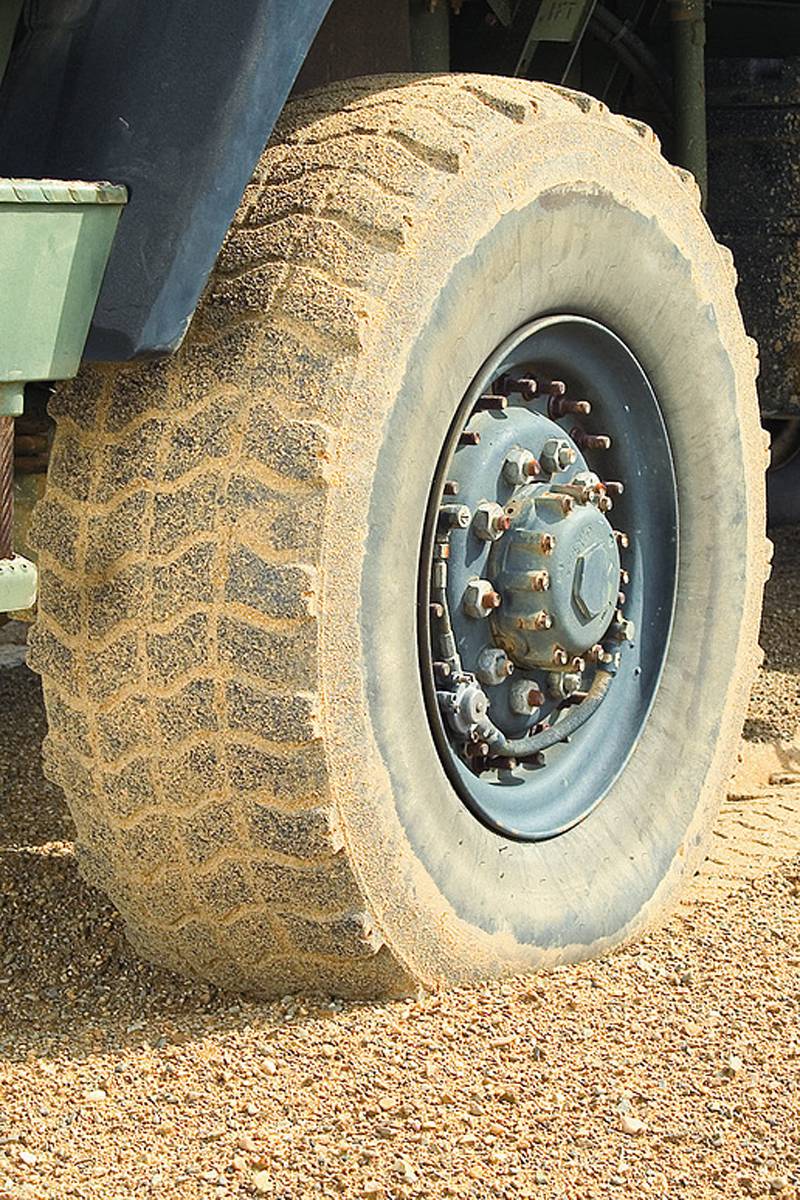
Spicer system is designed to increase the throughput of the machine by adjusting the tire pressure, which allows to obtain the optimal tire footprint on any soil.
Damage to the wheel or tire should not lead to extremely costly repairs, and even more so to jamming the combat vehicle right in the middle of the combat zone. The exclusion of such situations is the main task of specialized companies.
Buying a new car today, you may well leave the salon on a set of rubber with protivoproskolnymi inserts, which will save you from the unpleasant occupation of replacing a flat tire on the side of the road. In the event of a puncture or damage to the tire, you can continue to travel a distance of 80 km without any serious consequences for the wheel itself until you find a service center to replace it.
In addition to saving weight on the spare wheel and tools to replace it, the fire resistant tires allow drivers not to worry about the puncture occurring in bad weather or in an unsafe place to stop, because they can continue driving without risk of damaging the car even more.
Increase the cost of a vehicle by several hundred thousand dollars, the cost of replacing a wheel by ten, replace a dangerous place on the road with a war zone and you can easily understand why improving tire technology is one of the most important aspects of protecting armored vehicles and their crews involved in military operations.
Wheel vulnerability
The tactical advantage of wheeled armored vehicles, which they allow to obtain due to its flexibility, deployability and maneuverability, quickly made them the preferred type of vehicle in Afghanistan. However, in the theater of operations (theater of operations), caused by the omnipresent threat of improvised explosive devices (IEDs), they also had their weak points. While additional reservations and newly designed double V-shaped hulls contributed to increased levels of crew protection, the inevitable increase in the mass of vehicles in such cases exacerbated problems related to puncture or tire rupture.
Ten years ago, for the most part of wheeled combat vehicles, the technology of reinforced monolithic rubber inserts was used. This is actually a reinforced “bagel”, placed inside the tire, which absorbs the mass of the car and protects the wheel in case of damage and air release from the tire. In order for the insert (thickened sidewalls of the tire) to be able to carry the mass of the platform while maintaining speed at a considerable distance, the rubber must be very “hard”, that is, in this case, powerful pressing tools are needed to install and remove the insert from the wheel, or the tire be delivered from the combat zone to the repair shop.
For the British army, whose entire fleet of wheeled vehicles used this technology, this led to serious logistical problems in Afghanistan. At some point in time, the damaged tires were sent back to the UK for repair while the organization of a network of mobile workshops for repairing wheels of the Runflat type (PTRF-RF (Portable Tire Repair Facility - Runflat)) did not allow doing everything on the ground. These deployable container modules allow for all types of operational repair and maintenance of tires during a military campaign.
Soft tread
The threat of IEDs makes tire manufacturers constantly develop new solutions that, after a puncture or a tire break, enable a car with a crew to safely reach the base, and also reduce wheel damage to a minimum.
The company Michelin, which produces universal tires X-Force, which are widely used on military vehicles, has developed a so-called "anti-mine" tire. The tire, first shown at Eurosatory 2014, was developed to meet the needs of the French army, in particular for the SOUVIM II mine clearance system.
This MBDA system, designed to clear aisles and neutralize IEDs, can clear up to 150 km per day. The system consists of two cars towing trailers to activate the min. The first car rolls over through the mine of the push action without activating it, while the mass of the towed car - the trailer for triggering the mine RGM (mine-triggering trailer) - causes the push action mine to be triggered to ensure the passage of the second car. That, in turn, tows two more RDM with different wheelbases, clearing, thus, the track across the entire width.
Michelin has created its own mine tire that exerts less pressure on the ground than a human foot. This makes it possible to clear safe passages in minefields without explosions.
The Michelin LX PSI 710 / 75 R34 mine tires allow the machine to travel through minefields without initiating and activating land mines in a flat and conical shape. This was made possible by very low pressure wheels. When these tires are installed on the SOUVIM II 7,5-ton machine, the actual pressure on the ground refuses to be less than that of the human foot — 360g / cm2. Standard reconnaissance vehicles have a ground pressure of approximately 5 kg / cm2.
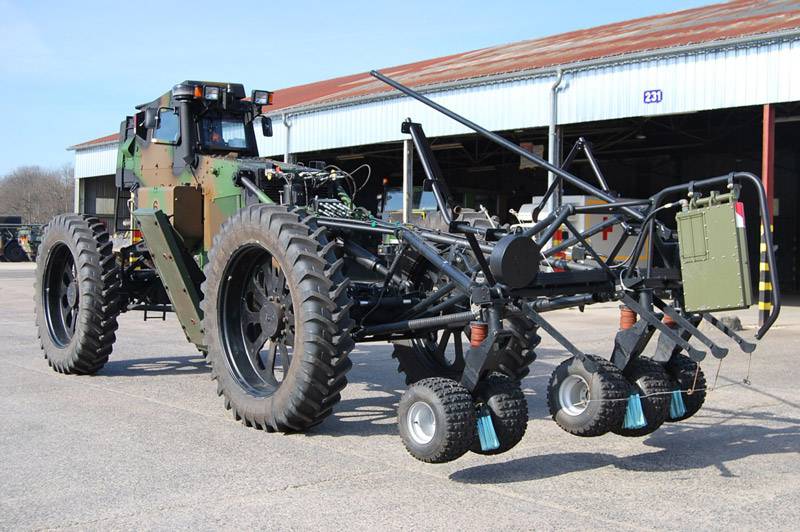
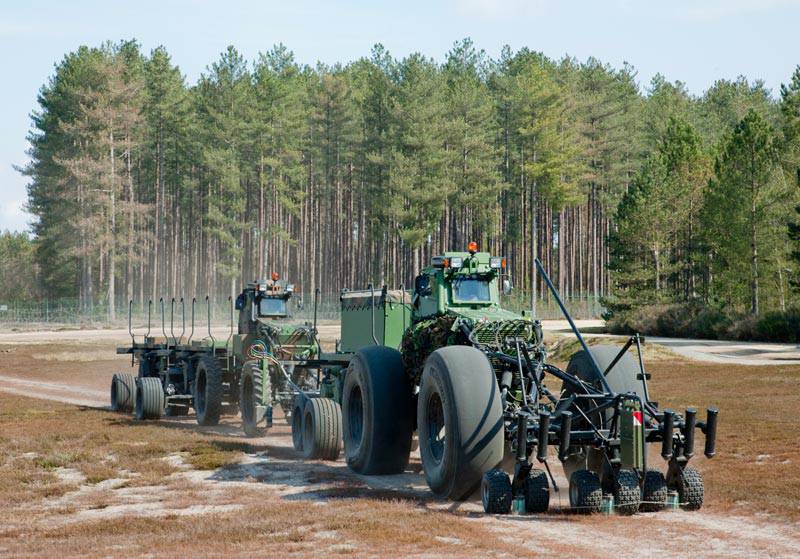
Demining system SOUVIM II of the French Army
The tire construction uses a strip of 10 cm thick foam glued to a tire, which is a development of Michelin tires for agricultural machinery. The tire allows you to get the largest possible contact patch of the tire with the supporting surface, and the strip of foam itself is covered with a thin protective rubber "film" that also increases the grip.
Advantages of rubber
Rubber has a number of advantages in the technology of fire resistant inserts, and some manufacturers work exclusively with this material.
“Rubber does not have a tendency to destruction, it absorbs some of the shock loads, which is important for military vehicles traveling off-road in a hostile environment,” said Tyron Glaisbrook, technical director of Tyron.
“Unlike composite materials, which are very hard materials themselves and can cause large shock loads, even with an excellent suspension, and with high shock loads, the likelihood of wheel damage and loss of mobility increases — rubber dramatically reduces the vibrations and shocks that are transmitted through the insert on the wheels, bridges and drive shafts ".
“This has a positive effect on driving and reduces damage to the inside of the tire, which means its potential reuse.”
Rubber is also the only material that allows you to get the so-called "lock", which is the central element of the design of Tyron's bullet-resistant inserts. The tire bead lock is a mechanical device that fixes the bead of the tire (the edge that sits on the wheel) on the wheel itself. In an inflated wheel, the shoulder is pressed against the inner surface of the wheel rim due to the pressure in the tire so that the tire and the wheel rotate as a single unit. When tire pressure drops, such as a puncture or damage, the lock is necessary to avoid turning the tire inside the wheel, which, in the end, can lead to loss of mobility.
“Military vehicles must be able to continue the task and return to the base on one or all of the flat wheels - the guaranteed minimum is 50 km with two or more flat tires or at least two hours off-road driving with inclines and obstacles,” said Glaisbroek. “Our All Terrain Rubber [ATR] inserts allow military vehicles to exceed this distance, and therefore, in the event of damage, the machine can travel with one, two or even eight flat tires to the place where they will be repaired or replaced.”
“Due to the fact that our inserts consist of several parts, they can be installed without special tools, they can be easily replaced even on the side of the road with standard equipment for changing tires, while they still retain all the advantages of rubber.”
Proven and tested
Tyron customers subjected ATR inserts to ballistic tests with an emphasis on connecting elements to ensure that the insert will remain operational with a powerful kinetic attack. This is important because rubber absorbs significantly more energy (starting from curbstones and ending with IEDs) than solid materials.
In September of 2015, Tyron announced that it would work with the Global Wheel to supply complete combat-resistant inserts for the Springbuck armored personnel carrier manufactured by the South African DCD Defense. The initial contract provided for the supply of three complete sets of wheels, the design of which consists of a wheel rim from the Global Wheel, prefabricated anti-rifle ATR inserts from Tyron and tires from Continental.
Together with its partner, the Global Wheel company, Tyron supplies complete wheels with armor resistant inserts for the Springbuck armored personnel carrier manufactured by South African DCD Defense.
Work on this contract continues and the company claims that they see a great interest in their products from manufacturers of vehicles with wheel formulas 4x4, 6xXNNXX and 6x8.
“As is the case with the Springbuck machine, the insert can be supplied as part of a complete wheel for installation on a new machine,” Gleisbroek said. “They can also be supplied as a new component when upgrading in the middle stage of operation, since the bridge of the machine can take on extra weight. They do add mass to the car just like any other insert, but most armored vehicles can take on some mass and therefore there is no problem. ”
Comparison with composites
As a main alternative to rubber, composite materials have their own advantages - they are lighter, less expensive to manufacture, and can be adapted to the existing one-piece wheel.
RunFlat International offers several composite solutions for wheels, including its Dynamic RunFlat system, which consists of two or three bulletproof composite segments bolted to the wheel rim. The advantage of a two- or three-piece system compared to the “donut” style is that it can be installed and removed in the field using standard equipment.
When the tire is fully inflated, the segments remain fixed to the rim, but when the tire is lowered, they “spin up” against the rotation of the tire and wheel forward, compensating for the difference in diameters of inflated / non-inflated tires on each side of the axle. This allows the car to travel up to 100 km with one or more flat tires.
“Our modular inserts make it relatively easy to replace tires in theaters, which is very important because the tires in Afghanistan serve less than the estimated service life,” said Tom Westley, head of sales for RunFlat International. “In addition, our products do not wear out over time and do a good job with ballistic attacks or rugged terrain, which is always the cause of insert breakdowns.”
The polymer created and used by the company is able to withstand ballistic attacks. The material does not break, it absorbs energy and is drawn back regardless of the temperature. According to the company, this material is lighter than rubber, which makes it possible to increase the capacity of the machine.
Depending on the customer’s requirements, different Dynamic RunFlat solutions allow the car with a flat tire to travel a different distance: from 15 km at 50 km / h on the road and to 100 km on the road or 60 km off-road. Patented locking system makes them easy to install; there is no need for lubrication inside the tire, it is necessary only on the inner profile of the insert, which contacts the rim, which contributes to a smoother sliding of the tire in a flat condition. The company also offers the Static RunFlat system for composite collapsible rims of wheels of military vehicles, often off-road. The system consists of three bullet-resistant segments rigidly bolted around the wheel hub; they are fixed and hold the tire in place, whether it is lowered or not. Thanks to its patented form, the “shoulder” of the system works particularly stably in the run-flat mode. This system is primarily intended for military use on roads and off-road, it usually allows you to drive with a flat tire from 50 to 100 km.
RunFlat International does not name military projects that use its products, but it has several contracts in the Middle East - the second largest market after Europe - that are currently being executed.
“The withdrawal of troops from Iraq and Afghanistan has negatively impacted demand ... but new large projects on combat vehicles are starting to determine the need for inserts in the coming years,” Westley is full of optimism. “Our ability to supply lightweight, durable and easy-to-use wheels that can be adapted to each project is very important here.”
“Providing higher levels of protection against IEDs led to the fact that the machines are heavily gaining weight, while heavier machines need to be shod into wheels that can withstand increased loads. As an expert in the field of tires and wheels, we can develop and deliver a wheel that is fully compatible with the mounts insert or lock, as well as a complete wheel assembly, ready to be installed on the machine. ”
The Dynamic runflat system consists of two or three segments of a bullet-resistant composite, screwed to the wheel rim
In solid condition
The concept of "airless" or non-pneumatic tires has been explored for several years. They are mainly intended for the civilian market, especially for slow moving vehicles that do not use or do not need a suspension, for example, lawn mowers. But this technology has moved into the military sphere as a potential solution capable of withstanding landmines and IEDs.
Bridgestone has developed a series of prototypes of the Air Free Concept Tire airless tires, while Michelin is interested in the military use of its X Tweel Airless Radial Tire (ART) solution, which is a tire wheel assembly available in several versions for off-road vehicles.
Michelin Tweel Tire Family
The Tweel solution is a set of high-strength steel tapes that works like a semi-rigid cylindrical “longitudinal wall”, forming a kind of elastic mechanical spring around the wheel; High-strength polyresin knitting needles connect steel ribbons to the wheel hub. As is the case with conventional air tires, a low specific pressure is provided with a relatively small total mass.
Another option was developed by Resilient Technologies. The non-pneumatic Non-Pneumatic Tire (NPT) tire, under a contract with an army research laboratory issued in the middle of 2000, was designed and tested from the very beginning for the HMMWV armored car. The NPT tire provides exceptional mobility and safety compared to tires with inserts, since it does not pierce or descend when hit by a bullet, shard or undermining an IED.
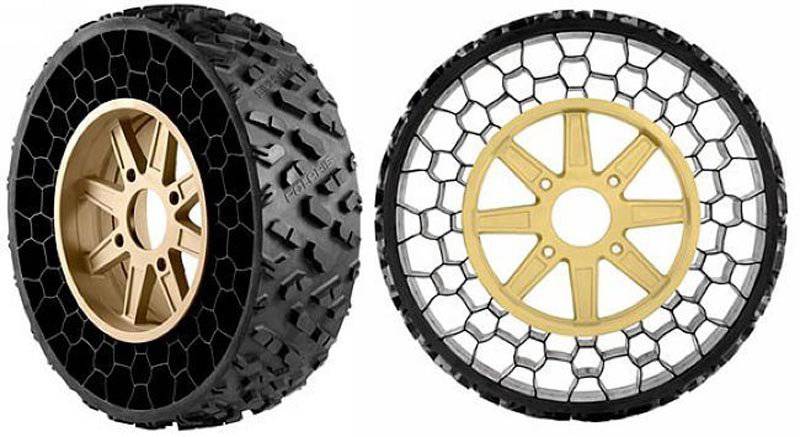
Non-pneumatic tire Non-Pneumatic Tire (NPT)
After Polaris bought Resilient Technologies, non-pneumatic NPT tires appeared as an option for the Sportsman MV850 off-road vehicle. TerrainArmor NPT tires can withstand bullets, sharp stones and other objects that can damage pneumatic tires, eliminating the need for a spare wheel on the car. Driving on such non-pneumatic tires is no different from driving on pneumatic tires.
The tire consists of a rim, a polymer disc and a tread sheet, which together form a "virtually indestructible" wheel. The canvas, the disc and the rim are specially designed for the target load and the prevailing terrain.
Tire management technology
Sophisticated "tire management" technologies are also becoming more common in the defense market, because users want to have improved all-wheel drive performance, better mobility and a comprehensive diagnostics complex integrated in one subsystem.
Dana announced in September 2015 of the year that it will supply its Spicer tire pressure control system for the new JLTV (Joint Light Tactical Vehicle) tactical armored vehicle that Oshkosh will produce for the US Army and Marine Corps. The system is designed to improve the characteristics of tactical wheeled vehicles on dirt roads, on large slopes, in sand or mud, while it contributes to an increase in speed on various types of terrain and allows you to reach the base in case of a puncture. The system also allows you to reduce ground clearance when transporting a car by various modes of transport.
In fact, the system allows, if necessary, to inflate and download tires, adjust the pressure in them to the level corresponding to the terrain, which increases grip and preserves permeability. The system is controlled by an electronic-mechanical control unit that identifies and solves all problems with tire pressure, allowing you to control each wheel separately. The control unit is an integrated module that includes mechanical, electrical and computer subsystems.
Dana has two basic systems in its portfolio with slightly different configurations. The first system is optimized for lightweight 4x4 machines; it is currently contracted for the JLTV project. The second, more productive system is installed on some of the larger military vehicles, for example, the category of MRAP or the family of military vehicles of average payload FMTV. The main components include a pneumatic control unit, high-velocity exhaust valves, an electronic control unit and wheel valves.
Robert Goldston, head of sales at Dana, said that the company actively supported contracts for all projects that competed for the JLTV program, starting from the concept development stage, the technical design stage and ending with the full-scale development and production preparation.
“Due to these efforts and strong ties with suppliers of components for our systems, we were able to clearly go through all stages of the JLTV program,” he added. - This system is essentially a ready-made commercial system, which we have developed for light military vehicles operating in difficult conditions. We had to carry out some refinement of the software in order to fulfill all the requirements of the JLTV project on tactical and technical characteristics. ”
The company is currently preparing for mass production in large volumes, while the systems for the initial batch have already been delivered.
The main determining factor in Dana's development work was the persistent customer requests for integrated user interfaces and algorithms for coordinated work with other machine subsystems.
“For example, if a suspension request is received to switch to a specific mode, the pressure control system will also enter a predetermined mode. In addition, customers want to reduce the time of pumping and air release from the tires, so as to quickly move from one type of terrain to another. "
In addition, the system can be programmed under operating conditions, and built-in diagnostic tools warn the driver about possible problems with the tires and give the status of the entire system. Working for the future, the company is working on solutions that will help reduce the time of pumping and air release from the tire.
Materials used:
www.michelin.com
www.mbda-systems.com
www.tyron.com
www.runflatinternational.com
www.resilienttech.com
www.dana.com
www.wikipedia.org
en.wikipedia.org
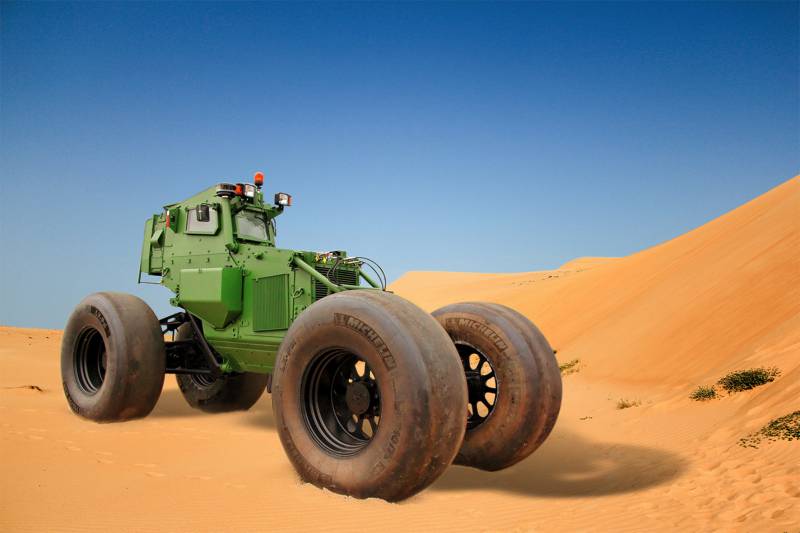
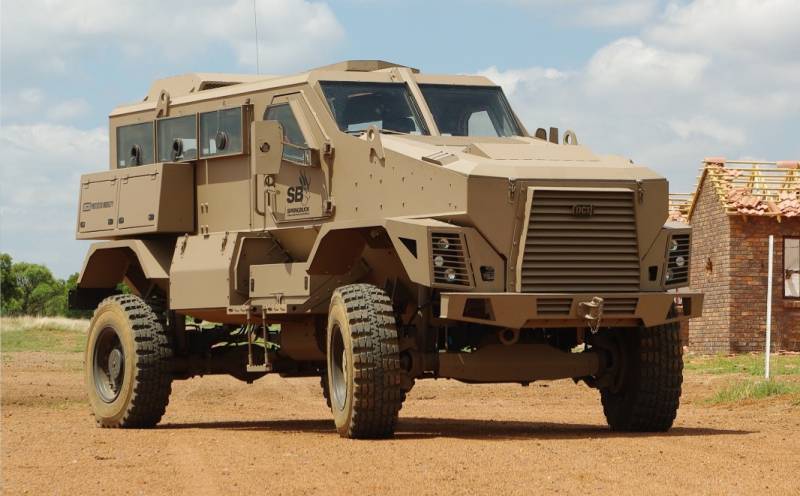
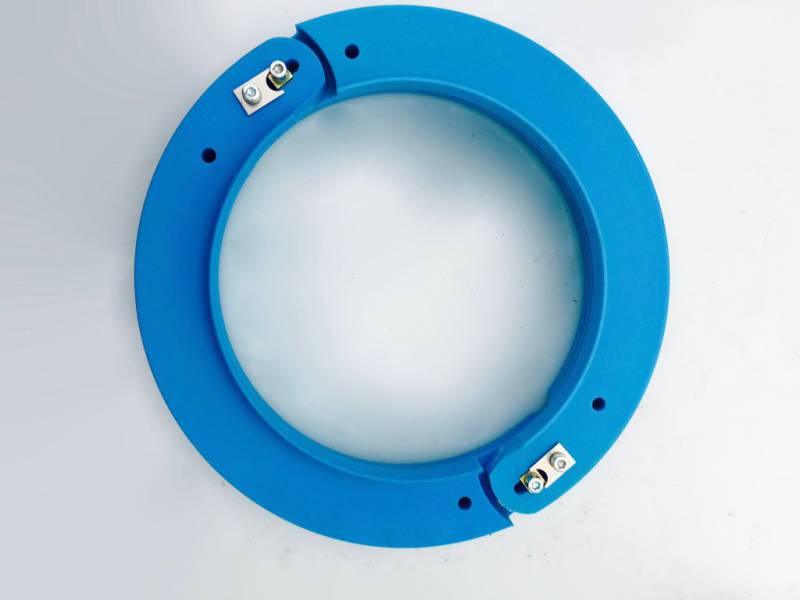
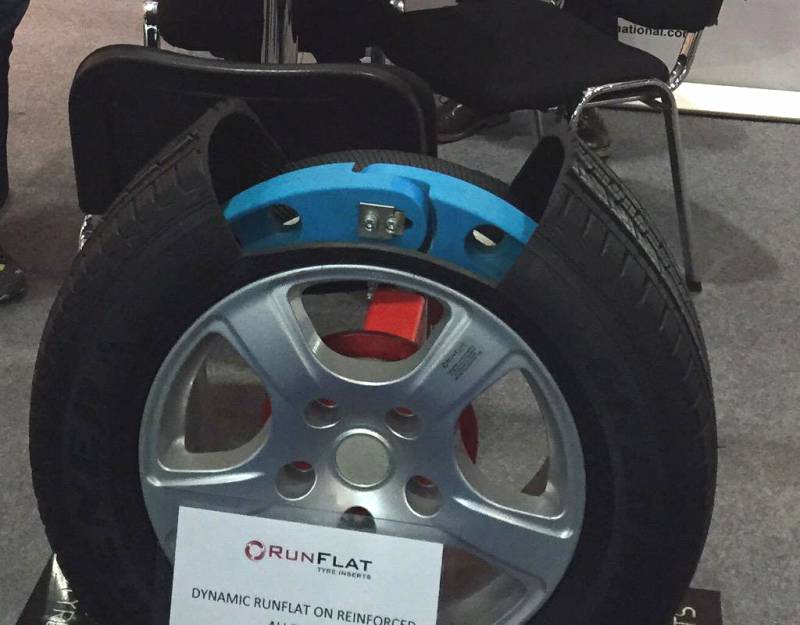
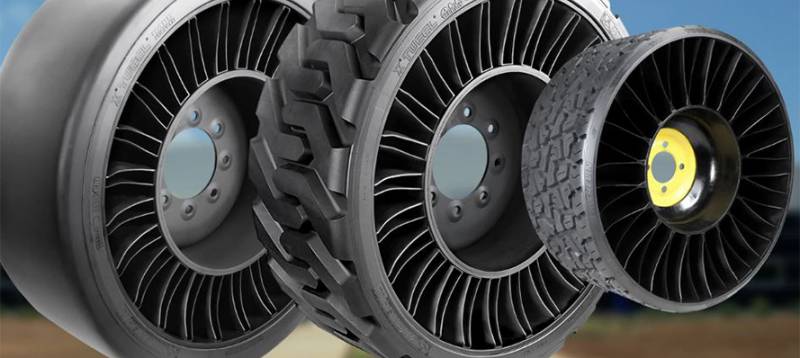
Information